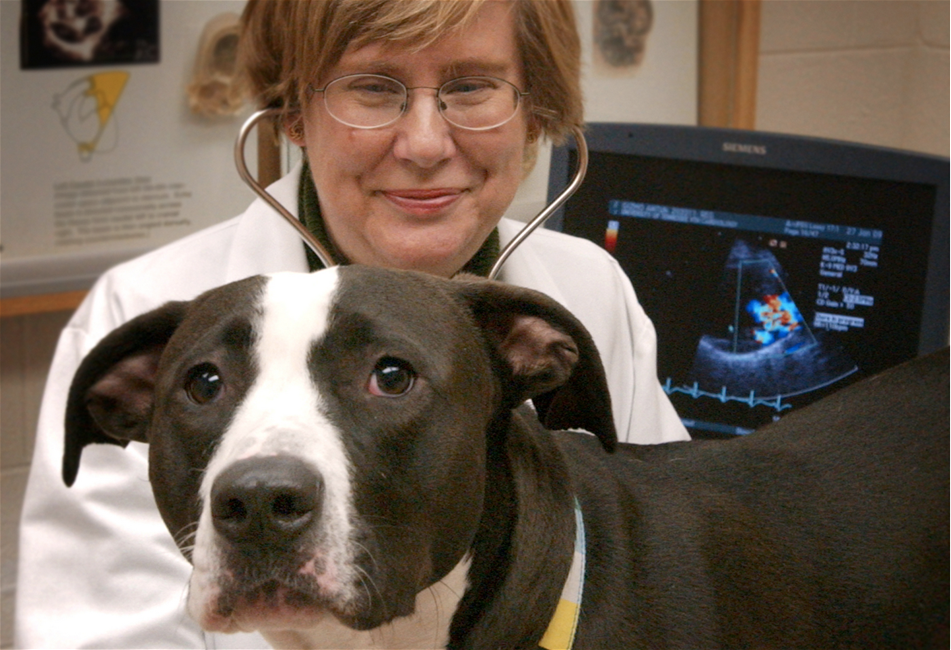What You Need to Understand About Veterinary Providers: An Introduction of Diagnostic Tools and Procedures
Vet services play a vital role in preserving the health of family pets. Regular examinations can disclose hidden wellness worries early on. Different diagnostic tools and treatments, such as blood tests and imaging techniques, supply important understandings into a pet's wellness. Understanding these techniques is vital for pet proprietors. What details diagnostic procedures are most generally used, and exactly how can they impact an animal's therapy strategy?
Importance of Regular Veterinary Exams
While many pet owners might underestimate the relevance of normal veterinary exams, these consultations are essential for maintaining an animal's general health. Routine sees to the vet permit very early discovery of potential health problems prior to they rise right into major problems. Routine exams often include vaccinations, which are crucial for protecting against transmittable conditions that can seriously affect a family pet's wellness. Furthermore, these consultations give a possibility for vets to analyze the animal's weight, oral wellness, and overall problem, making certain that the pet is thriving. During these sees, family pet owners can likewise receive valuable advice on diet regimen, workout, and precautionary care tailored to their details pet dog's requirements.
Typical Diagnostic Treatments in Vet Medicine
In vet medication, precise diagnosis is crucial for reliable treatment. Common diagnostic procedures consist of blood testing techniques, progressed imaging innovations, and urinalysis, each playing a considerable role in recognizing health and wellness issues. Recognizing these techniques enhances the capability to offer appropriate take care of animal patients.
Blood Examining Methods
Blood screening methods work as crucial diagnostic devices in veterinary medicine, enabling veterinarians to examine the health of pets accurately. These methods entail gathering blood examples to evaluate numerous components, such as white and red blood cells, platelets, and biochemical markers. Typical examinations include full blood counts (CBC), which examine total health and wellness and identify infections, and biochemical panels, which evaluate body organ feature and metabolic condition. In addition, serological tests can determine details diseases with antibody discovery. Blood testing is minimally intrusive and provides important details that helps in identifying problems, keeping an eye on health condition, and examining responses to treatments. Generally, these strategies play an essential duty in making sure suitable take care of animals and animals alike.
Imaging Technologies Made Use Of
Analysis imaging technologies are vital devices in vet medication, enhancing blood screening strategies by giving visual insights into an animal's internal structures. Common imaging modalities include X-rays, which serve for examining bone cracks and identifying international things, and ultrasound, which enables real-time visualization of soft tissues and organs. Magnetic vibration imaging (MRI) supplies thorough pictures of complex anatomical locations, specifically in neurological analyses. Calculated tomography (CT) supplies cross-sectional pictures, enhancing diagnostic precision for various problems. Each of these modern technologies help vets in diagnosing illnesses, planning therapies, and keeping an eye on healing. By incorporating imaging technologies, vet specialists can much better evaluate an animal's wellness and make notified decisions concerning their treatment.
Urinalysis and Diagnostics
Urinalysis works as a vital diagnostic tool in vet medicine, providing useful insights right into a pet's general health and assisting in the discovery of different conditions. This non-invasive treatment examines pee samples to assess kidney feature, hydration condition, and metabolic disorders. Typical components examined consist of particular gravity, pH degrees, glucose, healthy proteins, and the existence of blood or microorganisms. Irregular findings can suggest issues such as urinary system system infections, diabetes mellitus, or kidney condition. To improve analysis accuracy, urinalysis is often done together with various other examinations, such as blood work and imaging researches. Early detection via urinalysis can lead to prompt treatments, improving the diagnosis for many veterinary people. It is an important element of thorough veterinary treatment.
Recognizing Blood Examinations and Laboratory Evaluation
Recognizing blood tests and laboratory analysis is vital in veterinary medicine as it aids in detecting various health and wellness problems in pets. Various kinds of blood tests supply essential info regarding a pet's inner state, while interpreting lab results requires cautious consideration of many variables. This area will explore the types of blood tests offered and the relevance of their outcomes.
Sorts Of Blood Tests
Blood tests play an essential function in veterinary medicine, offering vital understandings into an animal's health and wellness condition. Different kinds of blood tests are utilized, each serving various objectives. Full blood matters (CBC) examine general health and wellness and find problems such as anemia or infection. Biochemical profiles assess organ function by gauging enzymes and electrolytes, offering understandings right into metabolic health and wellness. Serological examinations determine particular antibodies or pathogens, assisting in the medical diagnosis of infections or autoimmune illness. Blood inputting guarantees secure transfusions, while coagulation examinations assess the blood's ability to clot, essential for surgeries. These tests jointly boost diagnosis, treatment preparation, and tracking of an animal's wellness, showing the significance of extensive laboratory evaluation in veterinary treatment.

Translating Laboratory Outcomes
A thorough analysis of lab results is necessary for exact medical diagnosis and treatment in veterinary medicine. Interpreting lab results requires an understanding of typical recommendation varieties and the value of inconsistencies. Blood tests can reveal various health indicators, such as organ function, electrolyte balance, and the presence of infections. Veterinarians must consider the entire medical picture, including the pet's background, physical exam searchings for, and any kind of signs and symptoms offered. Variants in outcomes may occur from elements such as age, breed, and underlying wellness problems. As a result, lab results should not be viewed alone yet rather as part of an all-encompassing analysis technique. Accurate analysis permits tailored treatment strategies and much better results great post to read for veterinary people.
Imaging Techniques: X-rays, Ultrasounds, and Beyond
Imaging techniques are important devices in vet medicine, giving important insights right into the health and wellness and well-being of pets. Among the most frequently utilized approaches are Ultrasounds and x-rays. X-rays are indispensable for visualizing bone frameworks, helping vets determine cracks, growths, or international items. This method is non-invasive and quick, making it suitable for urgent situations.Ultrasounds, on the various other hand, utilize audio waves to create pictures of soft cells and organs. This strategy is particularly beneficial for analyzing the heart, abdominal area, and reproductive organs, enabling vets to evaluate problems like liquid accumulation or body organ abnormalities.Beyond X-rays and ultrasounds, advanced imaging methods such as computed tomography (CT) and magnetic vibration imaging (MRI) are increasingly utilized in vet technique. These methods offer in-depth cross-sectional images, improving the precision of medical diagnoses and treatment plans. CT Scans For Dogs. On the whole, imaging techniques play a necessary duty in guaranteeing efficient vet treatment
The Duty of Biopsies in Diagnosing Pet Health And Wellness Issues
Accuracy in detecting wellness concerns in pets typically website link pivots on the usage of biopsies, which provide definitive info regarding cells problems. A biopsy entails the elimination of a tiny example of cells for examination under a microscope, allowing veterinarians to identify various conditions, including infections, tumors, and inflammatory diseases. This diagnostic tool is essential for distinguishing between malignant and benign growths, guiding treatment choices, and reviewing the extent of a condition.Biopsies can be performed making use of numerous strategies, such as needle desire, incisional biopsies, or excisional biopsies, relying on the place and type of tissue involved. The choice of approach might impact healing time and the amount of tissue accumulated. Inevitably, the info obtained from a biopsy can lead to targeted therapies, boosting results for animals facing serious wellness obstacles. Vets stress the relevance of this procedure in accomplishing precise diagnoses and efficient treatment strategies.
Advanced Diagnostic Equipment: Endoscopy and CT Scans

Advanced analysis tools, such as endoscopy and CT scans, play an essential duty in modern veterinary medication, providing non-invasive approaches to picture internal frameworks and diagnose different problems in animals. Endoscopy entails making use of a versatile tube equipped with a video camera, permitting veterinarians to take a look at the stomach tract and respiratory system straight. This technique can disclose problems such as tumors, international bodies, or inflammation, allowing targeted therapy plans.CT scans, on the other hand, utilize innovative imaging technology to create comprehensive cross-sectional pictures of the body (Board Certified Veterinary Cardiologist). This technique is specifically valuable for evaluating complex structures like the brain, spinal column, and joints. By giving high-resolution photos, CT scans aid vets in identifying issues that may not appear with typical radiography. Together, these advanced tools enhance analysis precision, boost therapy outcomes, and ultimately add to better general family pet wellness monitoring

Interpreting Examination Results: What Pet Dog Owners Should Know
Understanding examination outcomes can be a difficult task for pet proprietors, especially after innovative treatments like endoscopy and CT scans have been performed. Analyzing these outcomes requires an understanding of clinical terminology and a clear understanding of what the searchings for indicate regarding the pet's wellness. Veterinarians typically give explanations, yet the intricacy of the great post to read results can still lead to confusion.Pet proprietors ought to proactively engage in conversations with their veterinarians, asking concerns to make clear any type of uncertainties. It is important to recognize uncommon versus normal results and the ramifications for the pet dog's treatment plan. Furthermore, identifying that some results may need additional screening or monitoring can assist proprietors stay notified concerning their pet dog's health journey. Eventually, a collaborative strategy in between pet owners and veterinary professionals cultivates far better health outcomes and improves the general treatment experience for pets.
Frequently Asked Questions
Just how Do I Select the Right Veterinary Clinic for My Family pet?
Picking the appropriate veterinary clinic entails looking into neighborhood options, examining qualifications, going to centers, and examining personnel interactions (Cancer Veterinary Near Me). Focusing on referrals from relied on resources can help guarantee the finest treatment and atmosphere for an animal's health needs
What Should I Do if My Pet Dog Rejects to visit the Vet?
When a family pet declines to go to the veterinarian, it's suggested to continue to be calm, use deals with or playthings to tempt them, and take into consideration arranging a home check out if anxiousness lingers. Perseverance and favorable support are essential.
Exist Telehealth Options for Vet Providers?
Telehealth options for veterinary services are progressively offered, enabling family pet proprietors to speak with vets from another location. These solutions make it possible for conversations concerning wellness worries, suggestions on small conditions, and follow-ups without requiring to see a clinic.
How Often Should My Pet Dog Have Oral Examinations?
The frequency of dental check-ups for pet dogs commonly relies on their age and type. Typically, veterinarians recommend yearly oral examinations, although some family pets may require even more frequent check outs to maintain ideal dental wellness.

What Are the Expenses Related To Vet Diagnostics?
The costs related to vet diagnostics can vary commonly, commonly ranging from basic examinations like blood work to sophisticated imaging strategies. Aspects influencing costs consist of the facility's area, equipment utilized, and details tests needed for every family pet. Vet solutions play an important role in preserving the health and wellness of family pets. While several pet dog owners might take too lightly the significance of regular veterinary check-ups, these appointments are vital for preserving an animal's general health and wellness. Furthermore, these visits supply a chance for veterinarians to evaluate the animal's weight, dental health, and overall condition, ensuring that the pet is thriving. Accuracy in detecting wellness problems in animals typically pivots on the usage of biopsies, which offer definitive details concerning cells abnormalities. Additionally, identifying that some results may call for more screening or tracking can assist owners remain educated concerning their family pet's wellness trip.